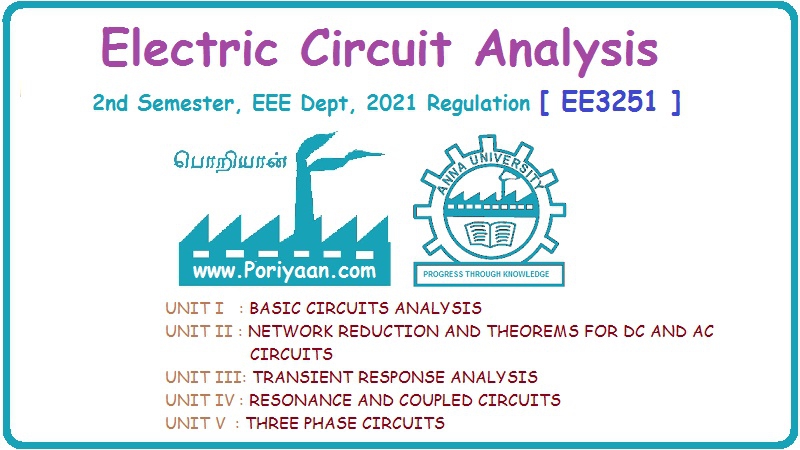Electric Circuit Analysis: Unit III: Transient Response Analysis
Transients when the excitation is exponential function
Worked Example Solved Problems
Electric Circuit Analysis: Unit III: Transient Response Analysis : Examples
TRANSIENTS WHEN THE EXCITATION IS EXPONENTIAL FUNCTION
Example
20 In the series RL circuit shown in the fig. 3.26, the applied voltage is e =
100 50t Find (a) resulting current and (b) initial rate of change of
current.
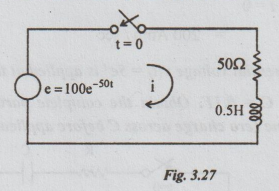
Solution:
In
time - domain, the equation describing the above circuit is
Ri
+ L di/dt = e … (i)
Substituting
the values, we get
50i
+ 0.5 di/dt = 100 e-50t … (ii)
Taking
Laplace transform on both sides, we get
50
I (s) + 0.5s I (s)- 0.5 i0+ = 100 / s + 50 … (iii)
i0+
= the initial current through inductor = 0 (assumption)
Therefore
equation (iii) becomes as
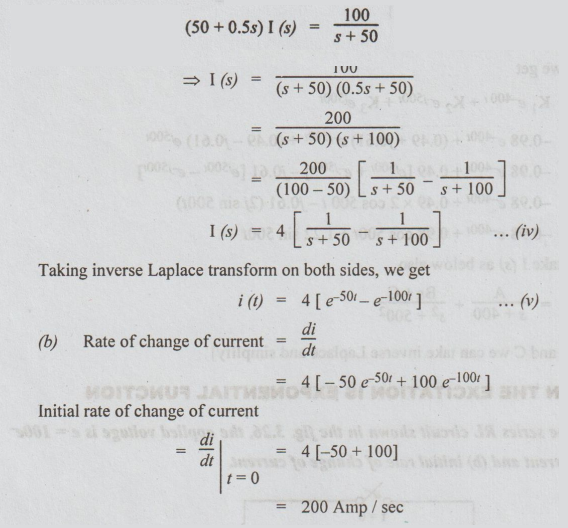
Example
21 An exponential voltage v(t) = 5et is applied at time t = 0 to a series R-C
circuit comprising of R = 52 and C = 0.1F. Obtain the complete particular
solution for current i (1) through the capacitor. Assume zero charge across C
before application of driving voltage.
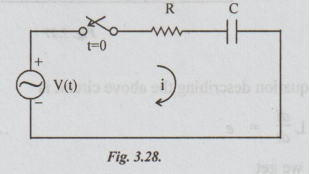
Solution:

Taking
Laplace Transform on both sides,

Substituting
the values of R, C, 90+ (= 0) and V (s), we get
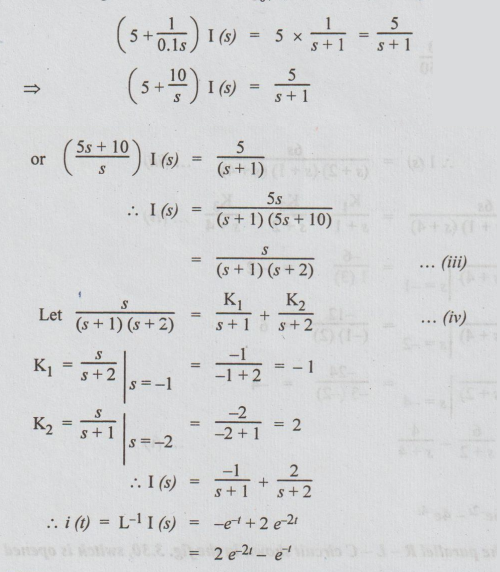
Example
22 In the circuit shown in fig. 3.29, the switch is closed at time t = 0. Obtain
i (t). Assume zero current through inductor L and zero charge across C before
closing the switch.
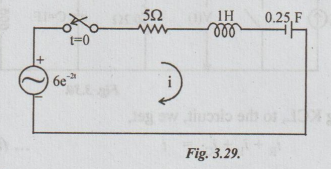
Solution:
By KVL, we get
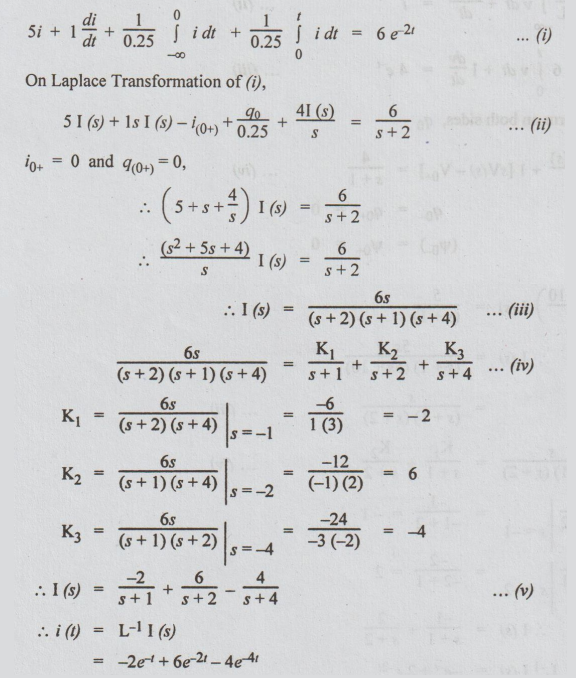
Example
23 In the parallel R-L-C circuit shown in the fig. 3.30, switch is opened at
time t = 0. Obtain v (t). Assume that the initial conditions are zero.

Solution:
By applying KCL, to the circuit, we get,
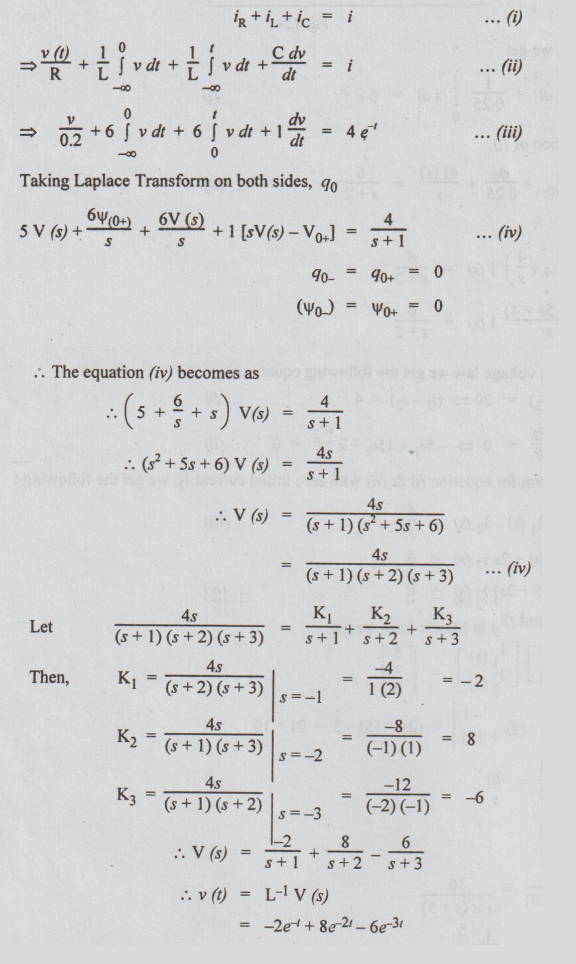
To
find the transients using Mesh and Nodal Analysis
In
some circuits, there may be many meshes and nodes. In such cases, we can use
mesh method and nodal method. In mesh method, KVL is applied and in nodal
method, KCL is applied.
Example
24 For the circuit shown in the fig. 3.31, determine the currents i, and is
when the switch is closed at t=0. Assume that the initial current through the
inductor is 0.
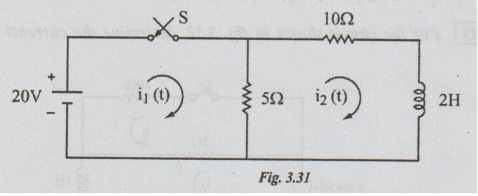
Solution:
Let i1, and i2 be the mesh currents in the loops 1 and 2
as shown.
By
applying Kirchoff's voltage law we get the following equations.

Taking
Lapalce transform for equation (i) & (ii) with zero initial current i2, we
get the following:

Putting
equations (iii) and (iv) in Matrix form we get,
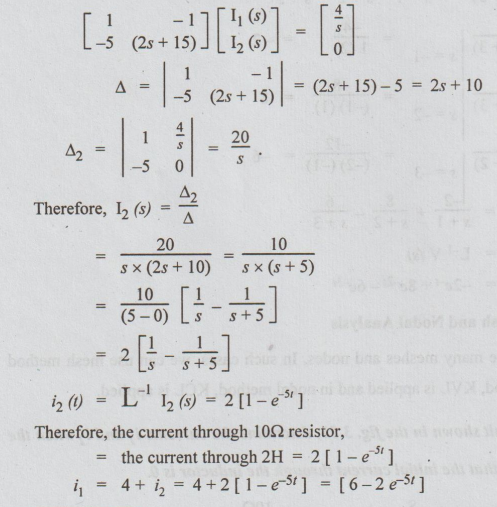
Therefore,
the current through 10 Ω resistor,
=
the current through 2H = 2 [1-e-5t]
i1
= 4 + i2 = 4 + 2 [1 - e-5t] = [6 - 2e-5t]
Example
25 For the circuit shown in fig. 3.32, determine the currents when the switch
is closed at t = 0
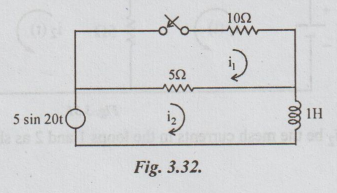
Solution:
In S-domain the given circuit is re-drawn as shown in fig. 3.33.
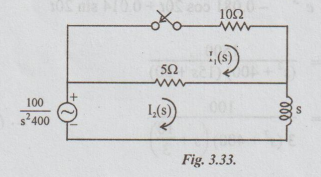
In
the matrix form, we write
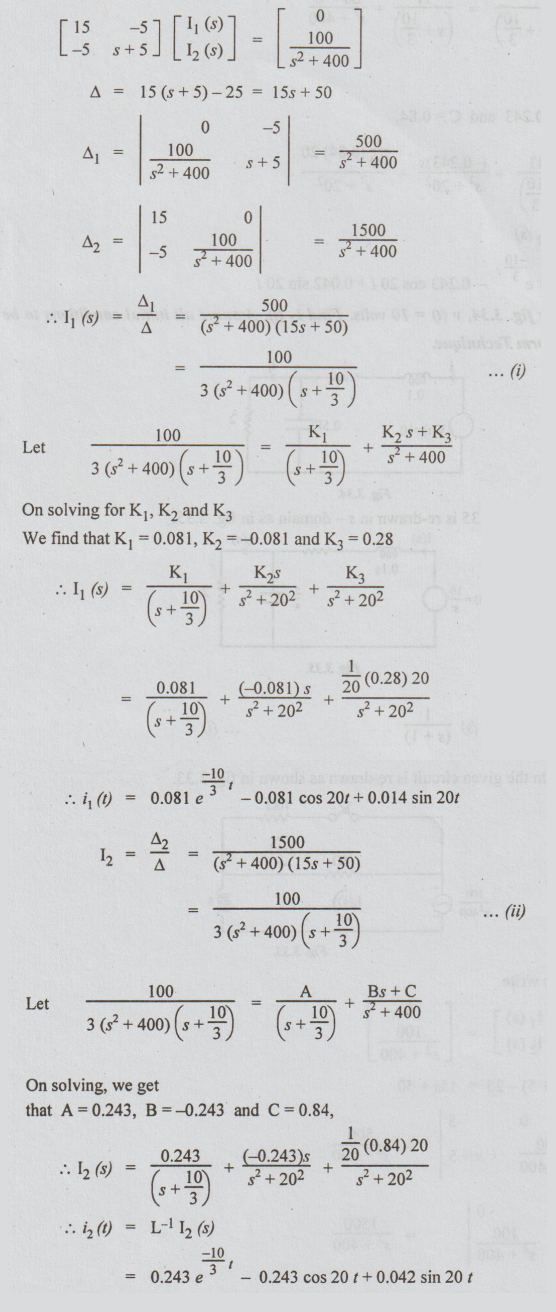
Example
26 In thefig 3.34, v (t) = 10 volts. Find i2 (t). Assume all initial conditions
to be zero. Use Laplace Transform Technique.
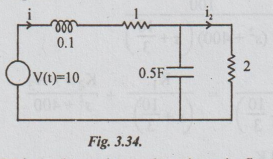
Solution
: The circuit in fig 3.35 is re-drwan in s – domain as
in fig 3.35.
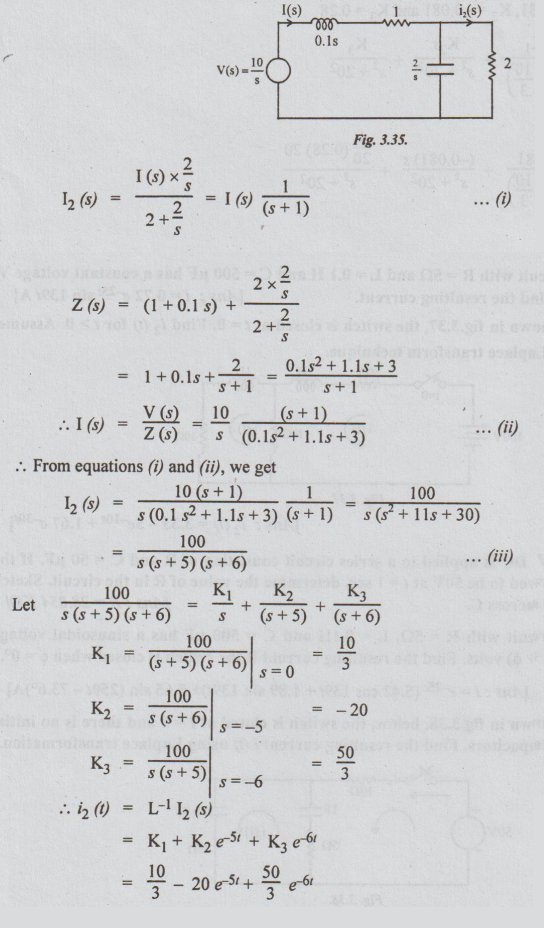
Electric Circuit Analysis: Unit III: Transient Response Analysis : Tag: : Worked Example Solved Problems - Transients when the excitation is exponential function
Related Topics
Related Subjects
Electric Circuit Analysis
EE3251 2nd Semester 2021 Regulation | 2nd Semester EEE Dept 2021 Regulation
